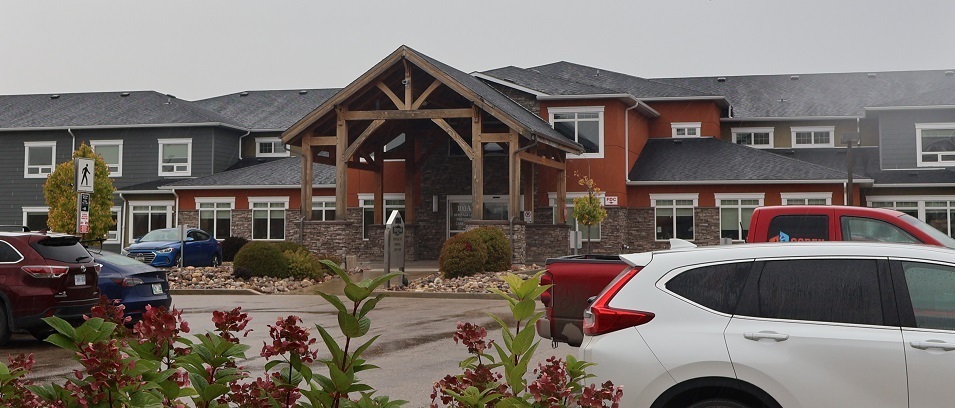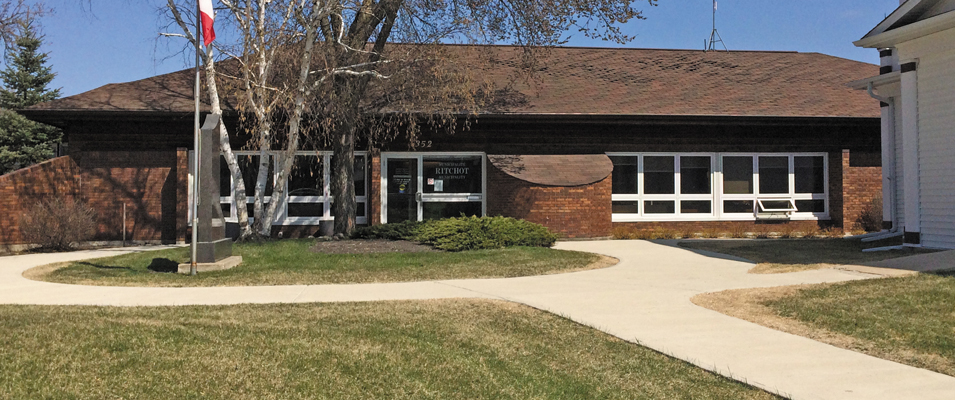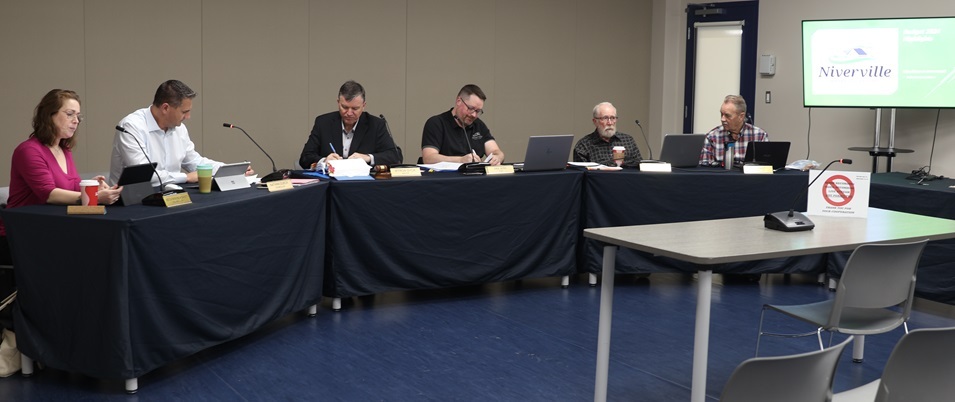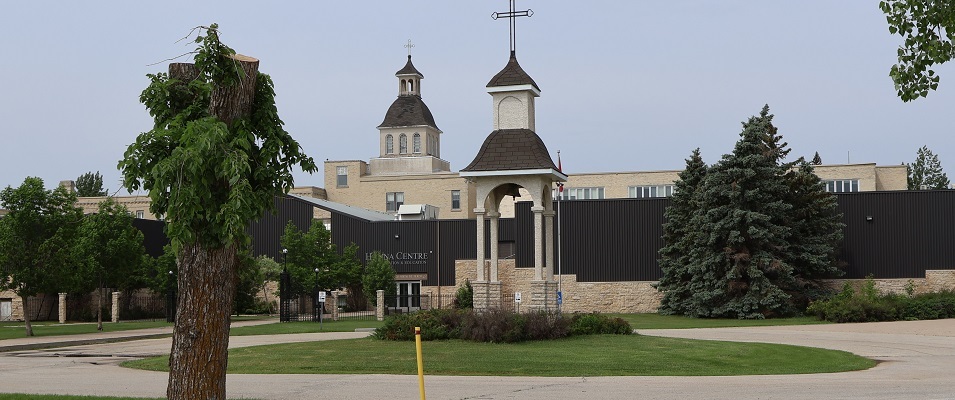
It’s been six years since The Citizen last explored the idea of a French immersion school coming to Niverville, in an article entitled “The Demand for French Immersion.” All these years later, the jury’s still out on whether that will ever be a reality. But depending on who you ask, there may be some reason for hope.
When the question was posed to the Hanover School Division (HSD) back in 2016, just as Niverville sat poised for a new high school, HSD’s response was vague but mildly optimistic.
At the time, the division was said to have hired a consultant with experience in implementing new French immersion schools. The findings would help determine the feasibility for HSD.
“We have asked the consultant to review all aspects of creating a French immersion school, to look at all the variables such as enrollment, staffing requirements, space requirements, and grade offerings,” former HSD Superintendent Randy Dueck told The Citizen in 2016.
Three years later, when Niverville High School opened its doors to students, the curriculum was all in English with the exception of a French elective class.
Unfortunately, when The Citizen requested a copy of the 2016 report in recent weeks, it was not forthcoming. Instead, Shelley Amos, HSD’s current superintendent, provided her own brief synopsis.
“With so much time passing, the collected data has limited relevance for any present-day discussion or future planning,” says Amos. “Regardless of the landscape six years ago, the recruitment/retention of French immersion teachers has proven to be increasingly difficult in Manitoba and across Canada. At present, students desiring French immersion are best served by attending schools in neighbouring divisions with such teachers employed.”
And that is, in fact, what parents in HSD have been required to opt for if they want their children to receive a functional education in French that goes beyond the most basic instruction currently available in English schools.
Niverville Students Enrolled in French Schools
Surprisingly, for the 2021/2022 school year, almost 11 percent of Niverville’s 1,218 secondary students are enrolled in other divisions where there are schools offering an education in French.
Out of the 133 Niverville students learning elsewhere, 57 attend French immersion while the other 76 are enrolled in full-French schools.
HSD is one of the final frontiers among the southeast Manitoba school divisions to not offer any options for French immersion. But even if they did entertain the idea sometime in the future, Amos says they would likely look for a central location within the division to which most students would be bussed.
Until then, parents are required to fill out an annual form that requests permission to educate their child outside of the division due to “programs not offered locally.”
For Niverville parents who wish to have their children bussed to an immersion school, École Héritage Immersion in St. Pierre-Jolys is the only option. Students of full-French receive bussing transport to École/Collège Régional Gabrielle-Roy in Île-des-Chênes.
Different Modalities in French Education
For one to understand the kind of French learning model that is best for their region, one has to first understand the different kinds of French learning options that are available.
The Canadian Charter of Rights and Freedoms recognizes the right of all Canadians to an education in both of the country’s two official languages.
“The right to minority language education… is designed to enhance our country’s bilingualism and biculturalism and maintain the unique partnership between language groups that sets our country apart among nations,” Section 23 of the Charter states.1
Recognizing that English is the dominant language used throughout Manitoba, a governmental initiative began in the early 1970s to incorporate French learning into the public-school curriculum.
The most basic form of French instruction is called French Communication and Culture (FCC) and it is a required curriculum in all English middle schools.
The Department of Education recommends at least 30 minutes of French instruction daily between Grades Four through Eight. The goal is to provide students with an elemental knowledge of French to aid them in simple communication and instill an appreciation for the culture.
In high school, French learning is no longer mandatory but must be offered as an elective course credit.
Early Start French is a curriculum available to schools wishing to provide basic French education from Kindergarten to Grade Three.
The next level in bilingual learning is French immersion. The immersion program is specifically designed for students whose first language is not French. The aim is for a higher level of mastery in both official languages so students can function equally well in either environment.
Typically speaking, the immersion program begins in Kindergarten and runs through Grade Eight or higher. Teachers in the immersion system are bilingual and use French as the primary language of instruction for the majority of the school day.
In 2021, French immersion was available in 115 public schools crossing 24 different school divisions in Manitoba.
Immersion schools can function on a single-track model, where every student in the school is enrolled in French immersion, or the dual-track model, where the French immersion program and the English program co-exist under one roof.
The École Héritage Immersion in St. Pierre-Jolys operates under the single-track model whereas the École St. Adolphe offers its students dual-track.
All immersion schools, whether single- or dual-track, fall under the governance of the school division in which they take up real estate. Should a French immersion school be created in Hanover, HSD would preside over general school policy.
The Bureau de l’Éducation Française is a department within the Manitoba education system whose mandate it is to support French language education in the province. The agency is responsible for French curriculum development, providing instructional materials and library services, administering government financial assistance programs, and offering educational support services.
In 1994, full-French education options became available to many Manitobans.
The Division Scolaire Franco-Manitobaine (DSFM) is a Manitoba-based school division with no territorial borders. Its mandate is to establish and govern schools that offer programming in only the French language.
Enrollment in a DSFM school is limited to children of parents who are deemed “right holders” under the Charter—in other words, at least one parent in the household can identify as a French minority.
A DSFM school operates completely autonomously from the school division in which it takes up real estate.
There are currently 23 full-French schools across south and central Manitoba with more than 5,000 students enrolled.
The Case for a DSFM School in Niverville
Alain Laberge is the general director for DSFM. He lives with his family in Mitchell, a community within the HSD catchment area. Laberge’s daughter busses to a DSFM school in La Broquerie.
“I always say that the difference between a French school and an immersion school is that in immersion you learn French, and in a French school you learn in French.”
Like all school divisions, the DSFM creates five-year capital plans to help them determine the most pressing needs in terms of school infrastructure.
Need is categorized in a number of ways, including renovation and expansion of existing schools. As well, the plan looks at prime locations for new schools to be developed across the province. Each category is then prioritized before the list is presented to the province for consideration.
The DSFM capital plan lists Niverville as a high priority for new school consideration. Locations on their list for new school builds include Sage Creek and Brandon. Both the Sage Creek and Brandon schools have since been approved by the province and await the first dig of the shovel.
A second DSFM school for Île-des-Chênes is on the wish list awaiting approval, followed by a Kindergarten to Grade Eight school for Niverville. Being on the wish list, though, is no guarantee that the province will concur with DSFM’s findings.
“Data shows me that [Niverville] is growing,” says Laberge. “We’re always a little bit ahead of the game. I don’t think we could get a school tomorrow morning because numbers are not yet high enough, but we project that we should get a school in three to four years because it takes 18 months just to build it.”
The numbers Laberge refers to are the percentage of right-holders living within Niverville and surrounding area that identify as French minority by virtue of heritage or French language fluency.
According to Laberge’s analysis, in spite of its population Steinbach doesn’t have sufficient French right-holders for the province to consider a DSFM school there. The Niverville population, on the other hand, is proving to be much more opportune.
“French is not even the third most-spoken language in Steinbach,” says Laberge. “In Niverville, it will be the second-most spoken language. It’s not there yet, but we’re watching the numbers.”
In order to build a case with the province for a new school, DSFM examines a number of factors affecting a region.
First, they look at annual figures coming from the local health authority which indicate the number of babies in the area born to parents who identify as French or fully bilingual.
Also assessed are the number of students currently leaving the community to attend French school elsewhere and the preschoolers enrolled in French daycares in the region.
Occasionally, DSFM will hold public meetings in communities that are being considered, to help determine the level of parental interest for a school.
Once a DSFM school is approved by the provincial authorities, the division immediately begins working towards the addition of a French daycare in the community.
The goal is to open the daycare at least two or three years prior to the completion of a DSFM build in order to get a jumpstart on future school enrollment. Getting accreditation for a French daycare can take up to 18 months.
According to Amos, another new school in Niverville is not currently a part of HSD’s five-year capital plan, although this could change depending on the community’s future rate of growth.
“Niverville Middle School is currently the fullest of the three schools,” Amos says. “Niverville Elementary School and Niverville High School have space. If required in the future, we would likely see the addition of portables or a school addition at NES or NMS before the province would consider building another new school.”
Laberge recognizes that there’s potential for HSD and DSFM to each make their case for different types of schools for Niverville.
“It could happen that both school divisions want a school,” Laberge says “The Ministry of Education would rather have us and Hanover talking [to each other], and we might say, ‘Maybe it’s a piece of land with two schools on it and we should share the soccer field in the middle.’”
A French Teacher Shortage
If there’s one thing everyone seems to agree on, it’s that there is in fact an unfortunate disparity in the number of French-speaking teachers available in comparison to the demand for them.
Laberge says there’s been a big push for more students to enroll in education at the Université de Saint-Boniface, Winnipeg’s only French-language university.
Canadian Parents for French (CPF) is a nationwide non-profit advocacy group that has been researching and providing resources to encourage French Second-Language (FSL) learning across the country for the past 40 years.
Janet Steinthorson is the executive director of the Manitoba CPF branch.
“Years ago we had a [promotion] called French for Life,” Steinthorson says. “That focused on recruitment and retention of FSL students. To some degree, we were a victim of our own success because now we have all these children and we don’t have the teachers to [teach them].”
She adds that the organization has changed its strategy now to encourage more students to pursue degrees in French-language education. They visit secondary and post-secondary schools using campaign strategies that are targeted at students as young as Grade Five.
Altona is one such community that is struggling to find enough teachers for the French immersion half of their dual-track schools.
“Sometimes we’ve had to hire people who are not certified teachers but get limited teaching permits because they have a fluency in the language,” says Krista Curry of the Border Land School Division. “It’s a struggle. We’ve sometimes had to combine classes if we don’t have enough teachers.”
It’s not a strategy that’s isolated to Altona, either. The Red River Valley School Division, which oversees École Héritage Immersion in St. Pierre-Jolys, advertises for casual educational assistants (EA) on their website. Applicants are required to fill out a form and provide three references. Nowhere is it indicated that an EA certification is required.
Similar job postings on the DSFM website still indicate that full certifications are required for teaching and EA positions in their schools.
For DSFM, the bigger issue is that of finding substitute teachers. Since almost all French-language teachers have a working knowledge of English too, they have options of subbing in almost any school in Manitoba.
With significant travel miles between many of the DSFM and immersion schools, narrowing your options can mean adding to your daily commute time.
A Local Parent Weighs In
Lindsay Unrau of Niverville sends three of her four children to St. Pierre-Jolys for French immersion instruction. While she believes in the program, staffing challenges at the school have her convinced that Niverville won’t be seeing a French immersion school anytime soon.
“There just aren’t enough French immersion teachers to go around,” says Unrau. “In some cases, EAs have been put in charge of teaching grades at École Héritage because their teachers have left for better opportunities in the city. It’s actually caused a lot of problems for one of my kids because the EAs were not educated enough to manage learning challenges.”
She adds that some French immersion schools can’t offer as many programming options due to budget challenges. Unrau’s oldest son opted to end his immersion schooling and attend Niverville High School to get more class choices during his senior years.
“I think a really good story would be, ‘Why isn’t the province better funding French immersion programs, not only to create better opportunity but to encourage and retain more teachers?’” Unrau says.
Herself a student of French-language learning, Unrau says the system needs some major overhauling when the ability to speak a certain language takes precedence over qualifications. Her husband is a paramedic by trade and has seen this kind of preferential treatment in his profession as well.
The Full-French Versus Immersion Debate
For many parents, DSFM will never be an option since it caters to a very distinctive community. Even so, they are perfectly happy with the French immersion option.
Natalia Possidônio puts her young son on the bus every day to École Héritage.
“We are a Portuguese-speaking family, and we wanted our son to learn French to improve his Portuguese,” says Possidônio. “Both languages share similar traits. Besides, he can have better work opportunities in the future.”
So far she’s pleased with the Grade One teacher and the regular communication that is provided to parents. In immersion schools, she says, reports are sent home in English.
The school provides a reading app that parents can use at home to help their children learn to read in French. Possidônio says it gives her the opportunity to learn along with him.
“My son thinks in English and 70 percent of time he replies in English to me and my husband,” she adds.
For this mom, it’s not about being fluent in more than one language so much as it is about having some working knowledge of a few languages.
Another local mom, Paige Malthouse, says that if a French immersion school came to Niverville, it would be her first choice.
“One of my first positions was in a call centre,” Malthouse says. “Had I been bilingual, I would have been making more per hour as they paid a premium for French employees. Learning French also allows for easier transition into learning other languages.”
She’s confident that many others in the community feel the same way about French immersion. As a matter of fact, she adds, it would give many new families just one more great reason to move to the community.
Karis Hutlet speaks French, but her husband does not. The couple has already decided that their children will attend DSFM instead of French immersion when it’s time to start school.
“The main difference is the level of French from educators and the level of expectation for students,” says Hutlet. “For example, when I was in school, we got punished for speaking English in the hallways and at recess. It is full, full French. Immersion is not as intense and sometimes the quality of French in the staff is subpar.”
Hutlet adds that, from her experience growing up, DSFM students had special access to extra funding which allowed for additional programming such as field trips and extracurricular activities.
“I spoke English at home as a kid because my mom didn’t know French,” Hutlet says. “But my school was so intense that I spoke better French than English. And when I got to university, I had to use a dictionary to learn English words in my textbooks.”
For another Niverville mom, driving her kids to French immersion in Île-des-Chênes has more to do with daycare options than schools.
Sabrina Broesky knew from the start that she wanted her children to be exposed to French learning. She started them off as preschoolers in the Growing Minds daycare in Niverville but, according to Broesky, the local daycare quit accepting children that wouldn’t be staying in the Niverville school system.
“Six families actually had to leave and find alternative care in 2017 because of the decision,” says Broesky, whose family was among them.
This conundrum narrowed her options for French school locations. She eventually found space for her kids in the Île-des-Chênes daycare program, making it more convenient for them to attend the French immersion school there as they grew up.
In 2021, she says, the Île-des-Chênes French immersion school stopped accepting out-of-catchment requests. She was one of the lucky few who got her kids in before that decision was made.
“St. Pierre-Jolys would be ideal for my kids,” Broesky says. “They provide bussing to Niverville and the schooling goes from Kindergarten to Grade 12. But it’s childcare that’s the barrier, at least for us.”
Once her oldest child is in Grade Six, she says, their family will be faced with a whole new dilemma. At that stage, the Île-des-Chênes daycare no longer provides before- and after-school options. Transferring him back to the Niverville school may be their only option.
Taylor Chevalier says she’d love the option of French immersion for her children as they reach school age, but not if it means sending them out of town.
“The convenience of extracurricular activities close by and still being involved in the town they live in is something I am not able to sacrifice, as much as I would like them to learn French, both for family and future career reasons,” Chevalier says. “I would love our whole family to be involved in the same community as much as possible.”
Indeed, it’s a sentiment shared by many Niverville families who recognize the value of having school friends who also live in your neighbourhood and play on your sports teams.
What Can Parents Do?
According to Laberge of the DSFM, if a full-French school is desired, parents should acquire as many signatures as possible on a petition and submit it to the trustees at the DSFM. On the other hand, if an immersion school is the preference, submitting the petition to HSD trustees is the best option.
Steinthorson of CPF agrees with the value of a petition. She recommends that parents form a taskforce and, once the petition is complete, CPF can help guide the parent team from there.


















